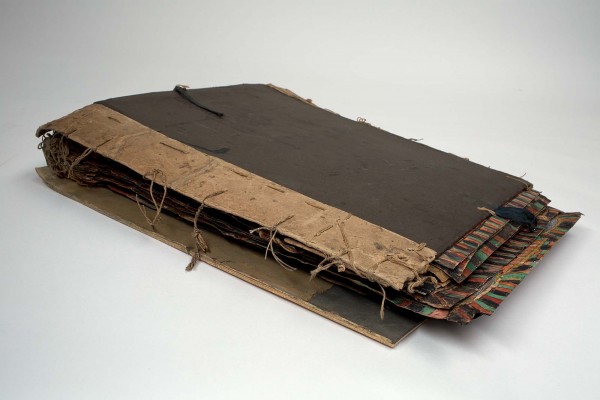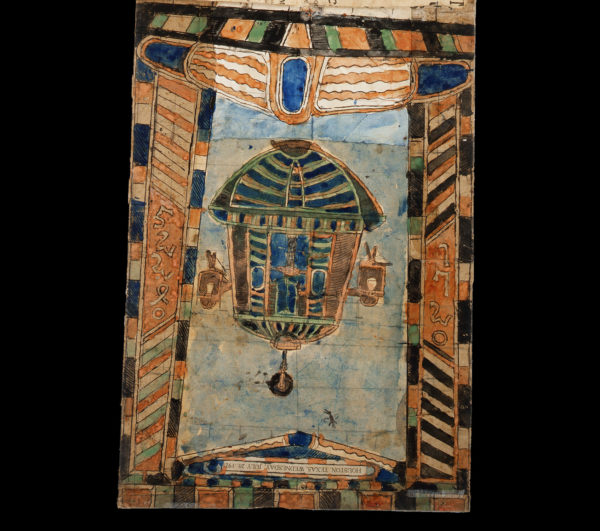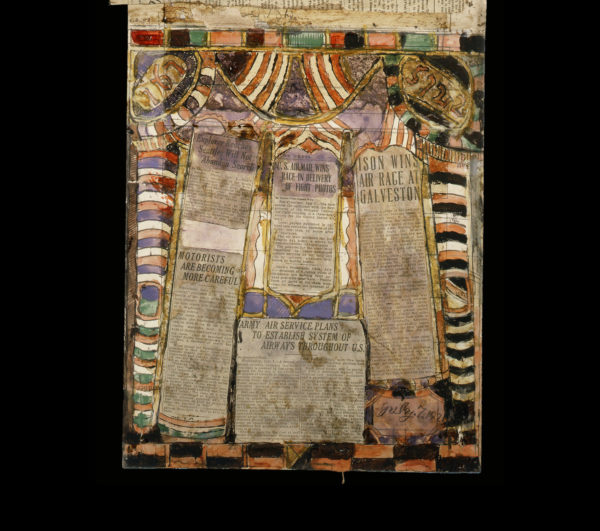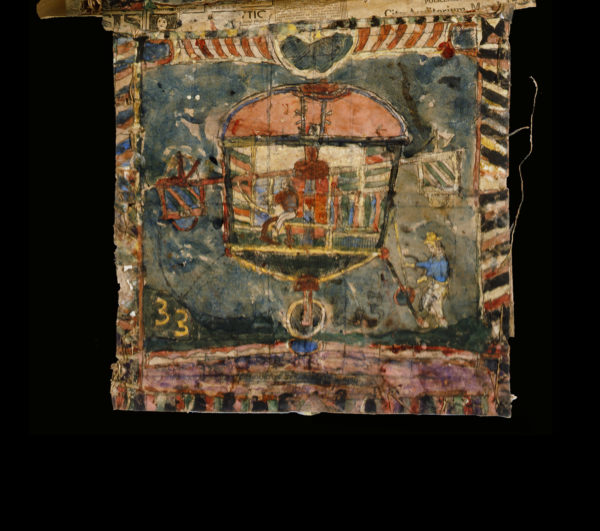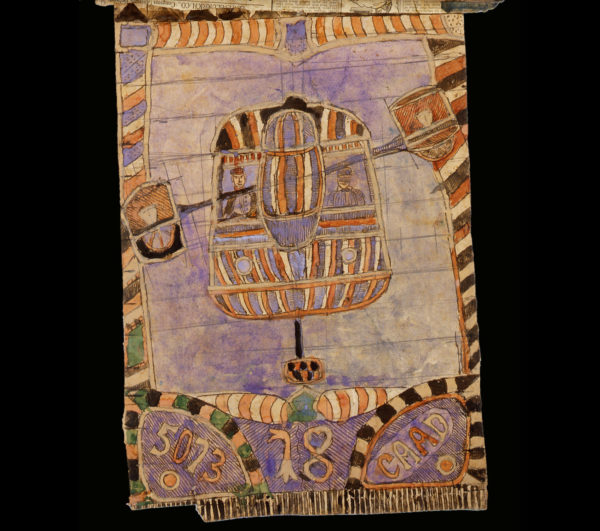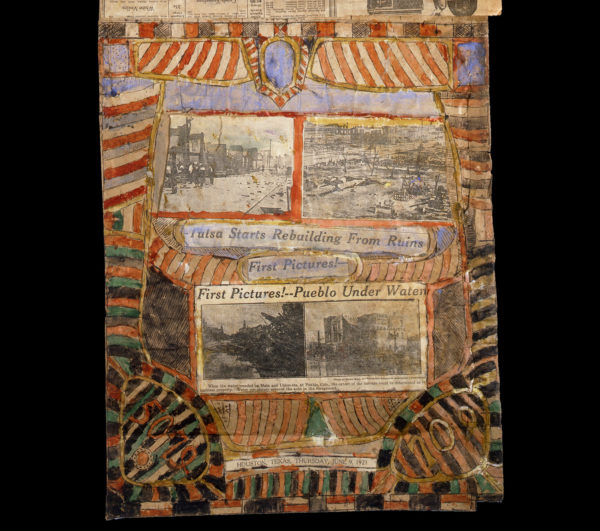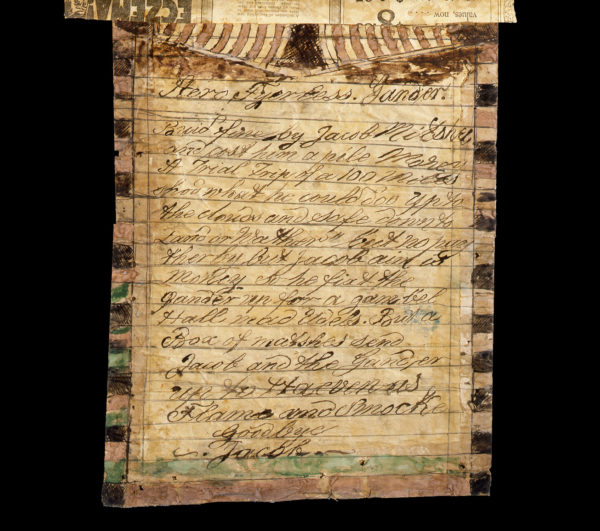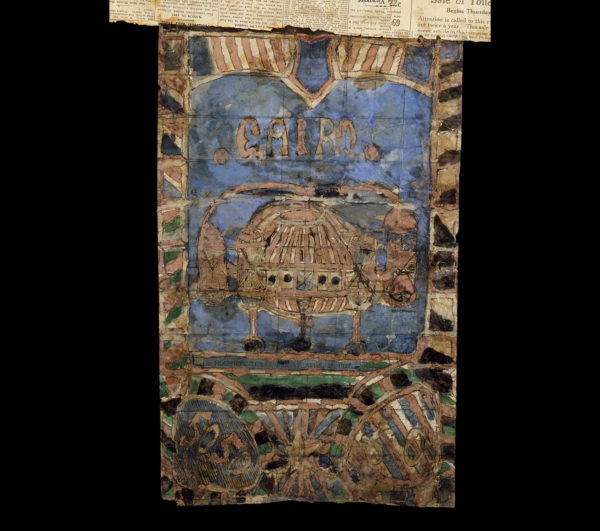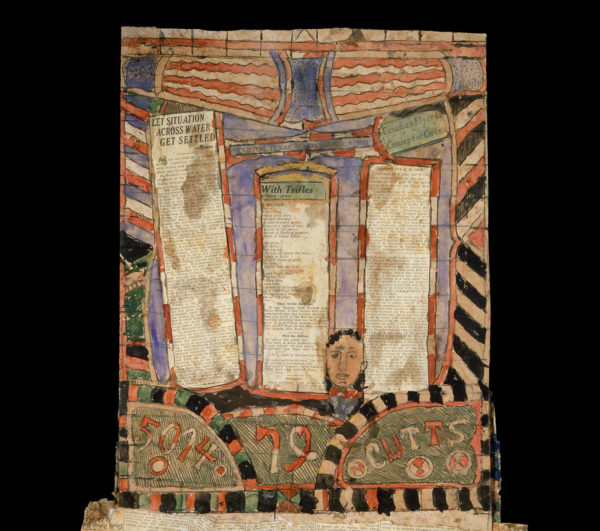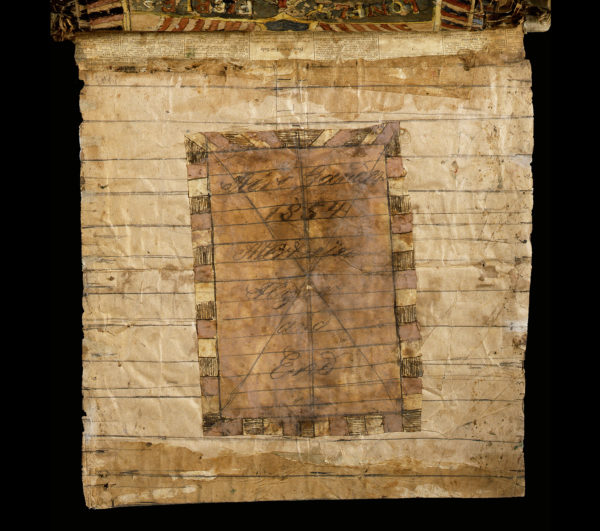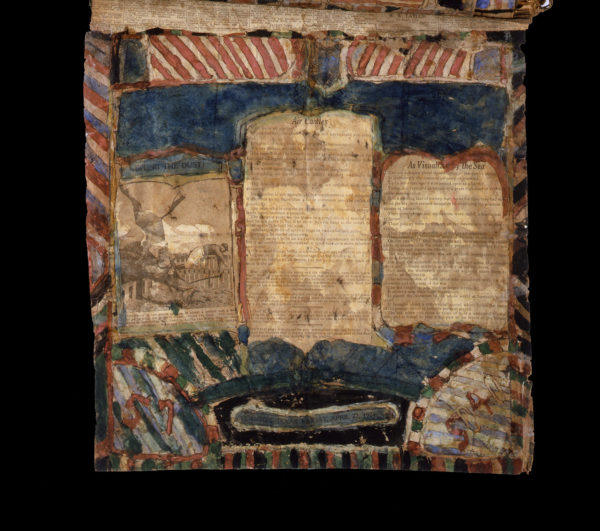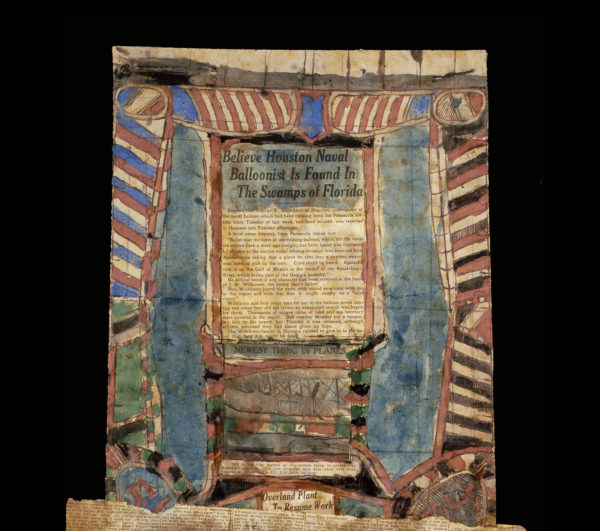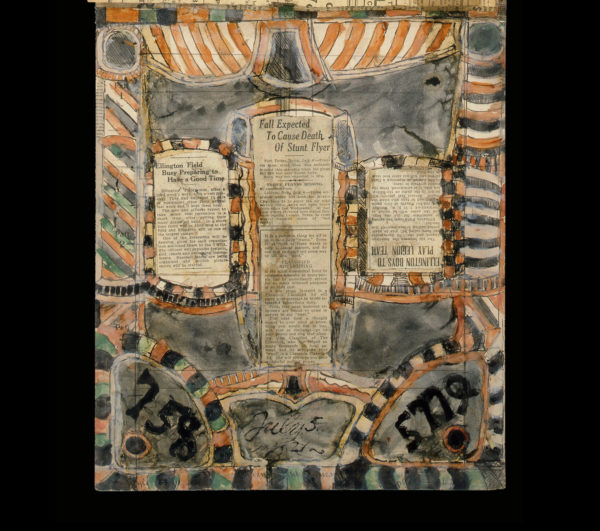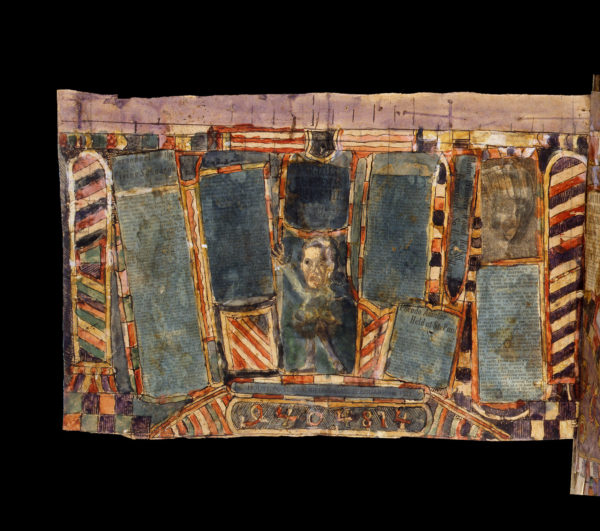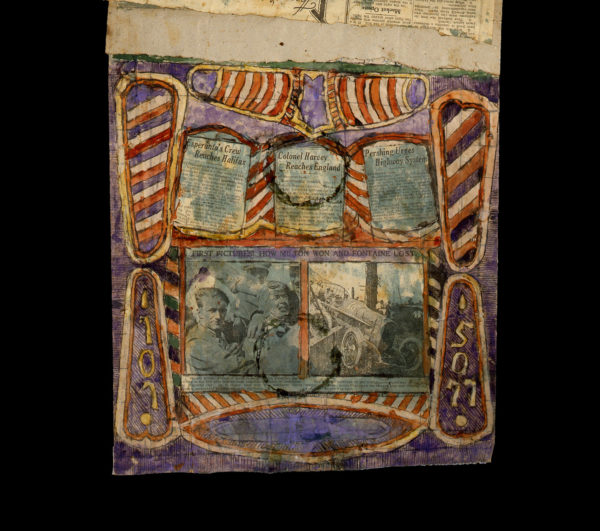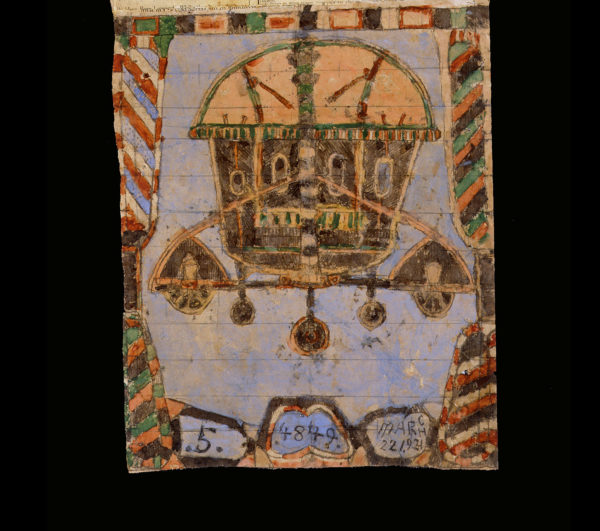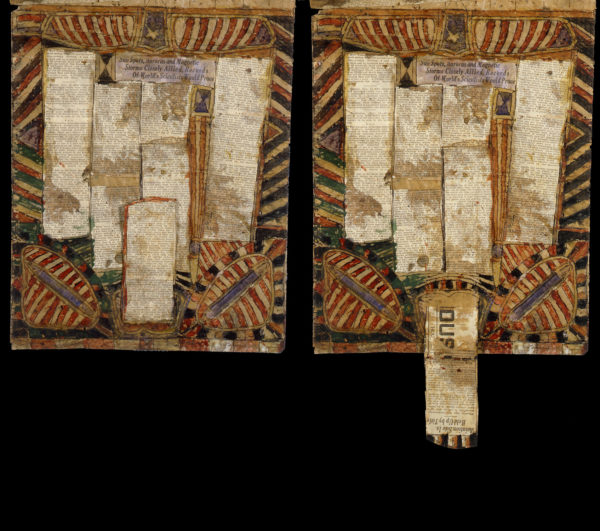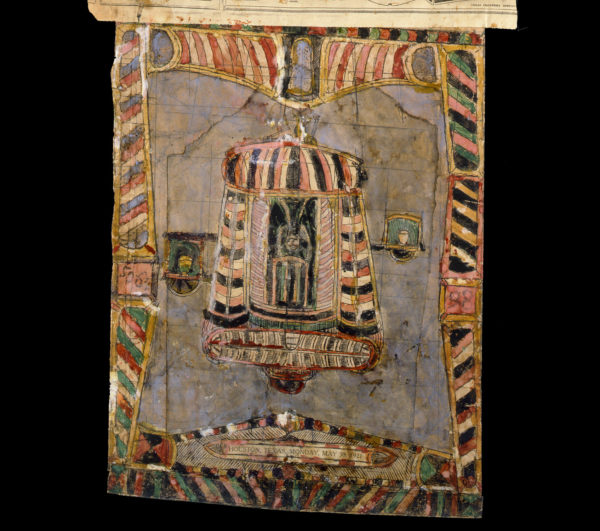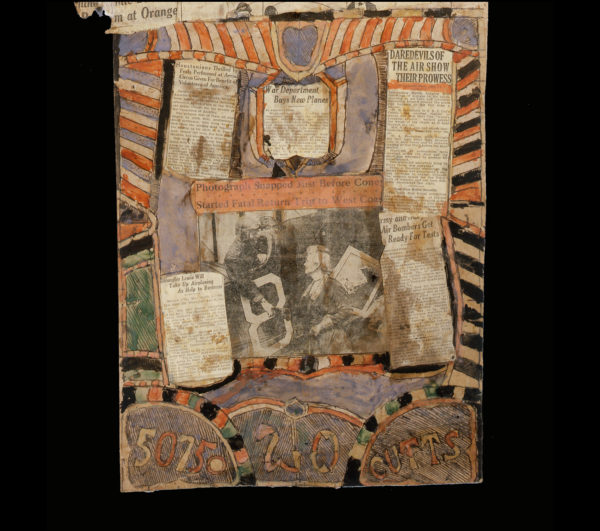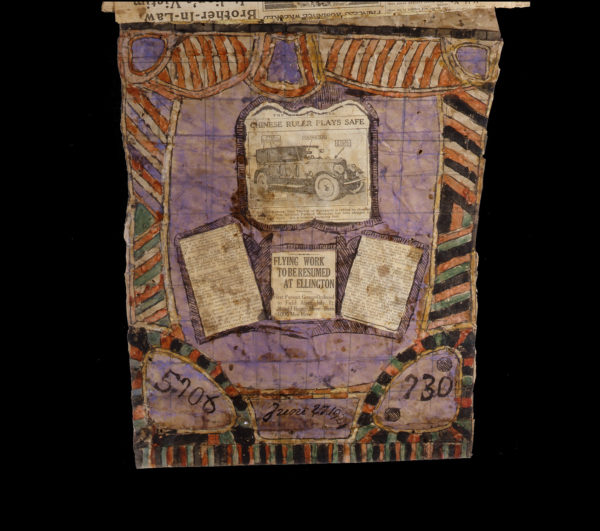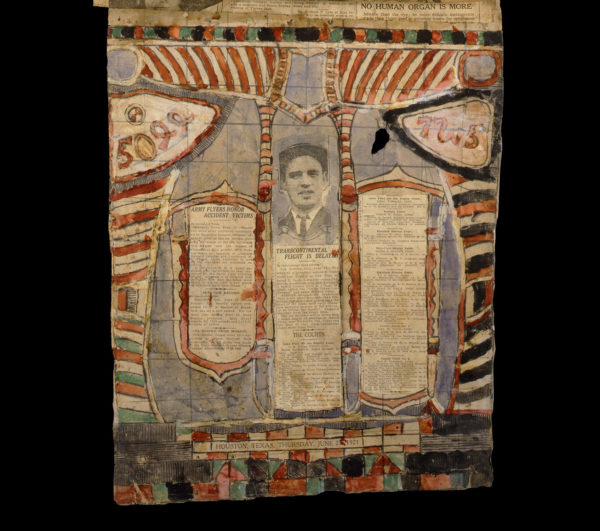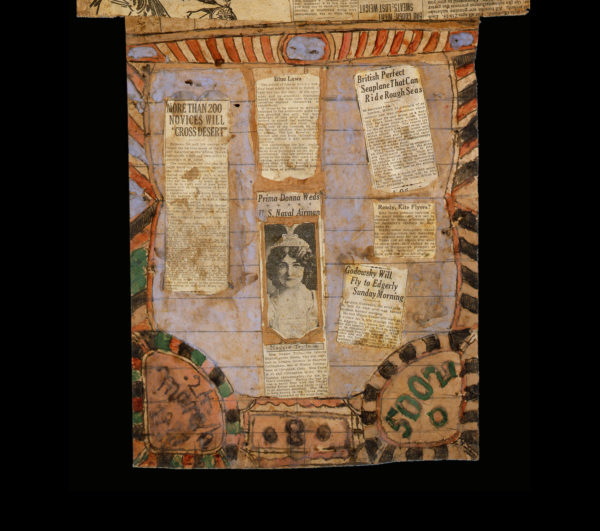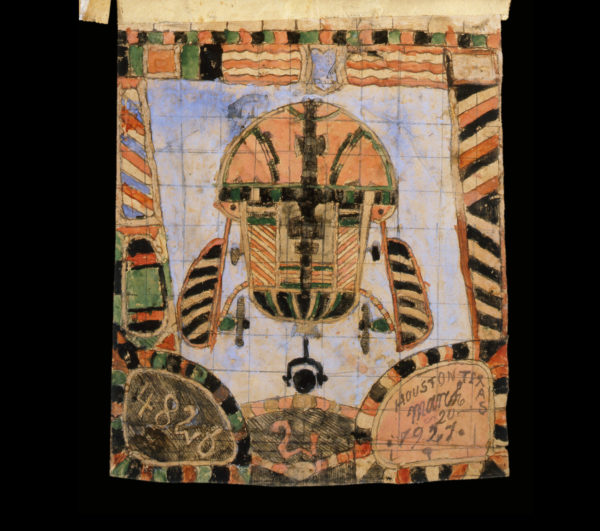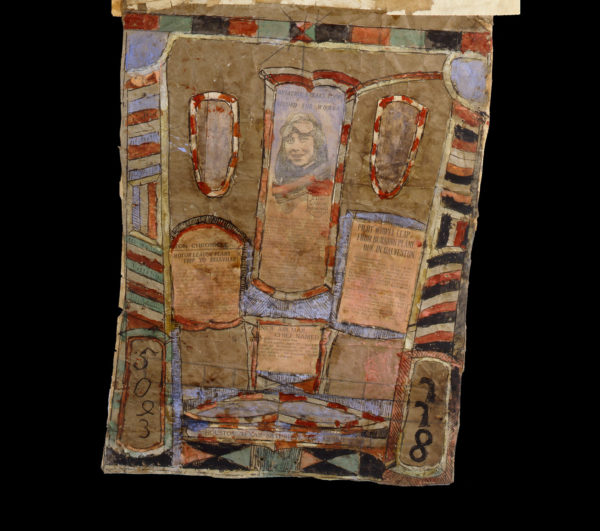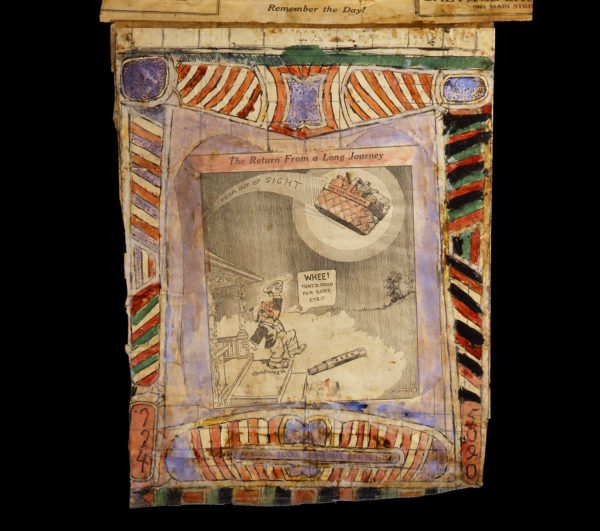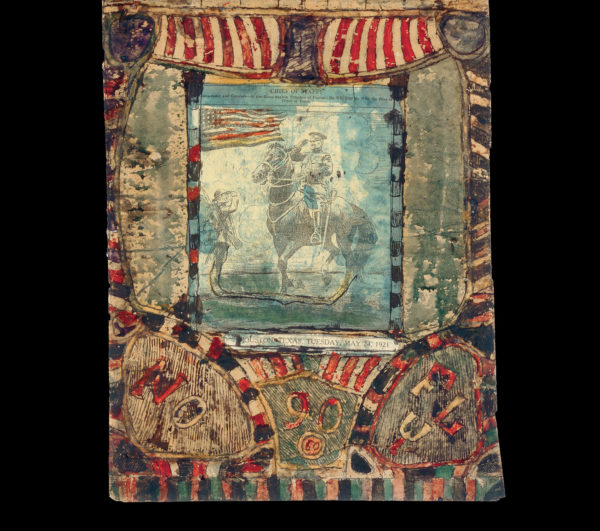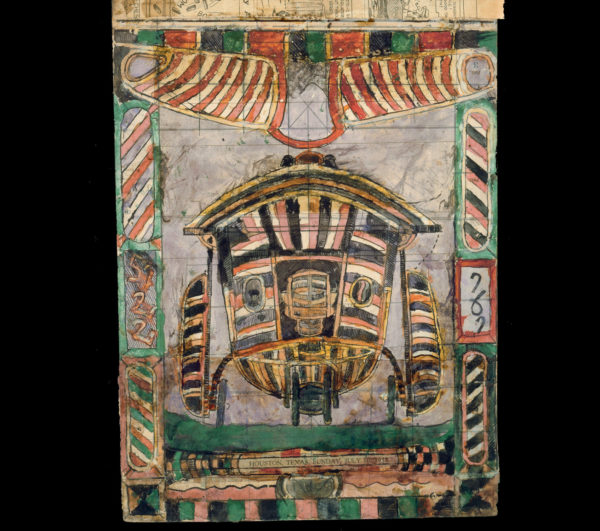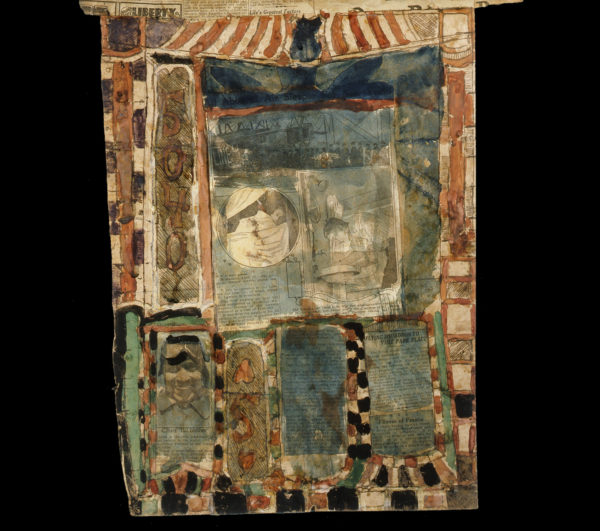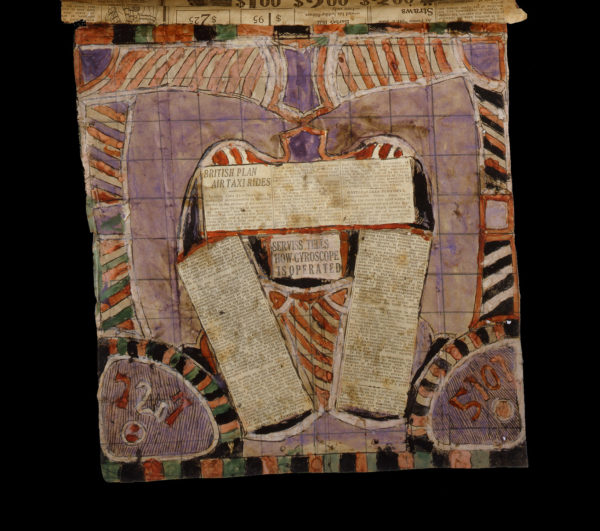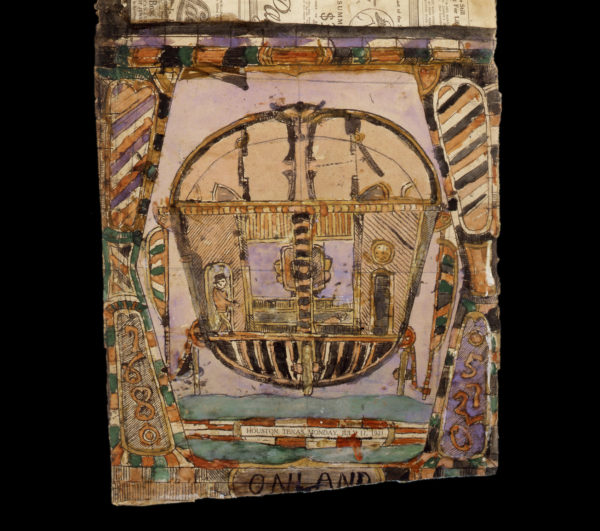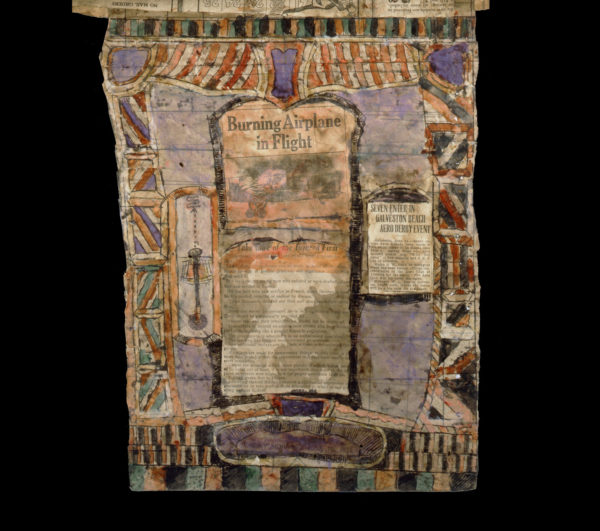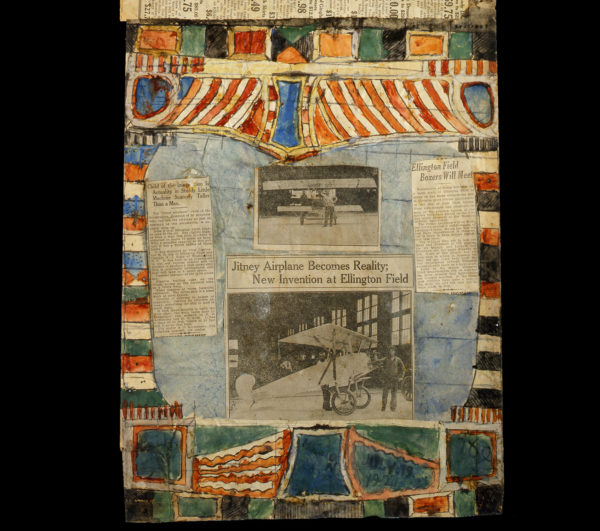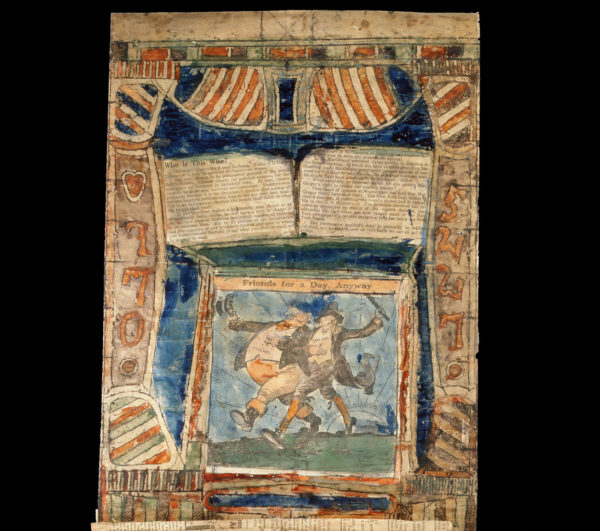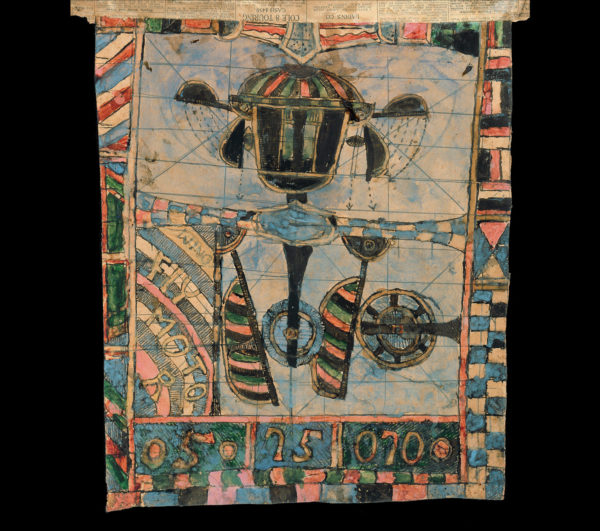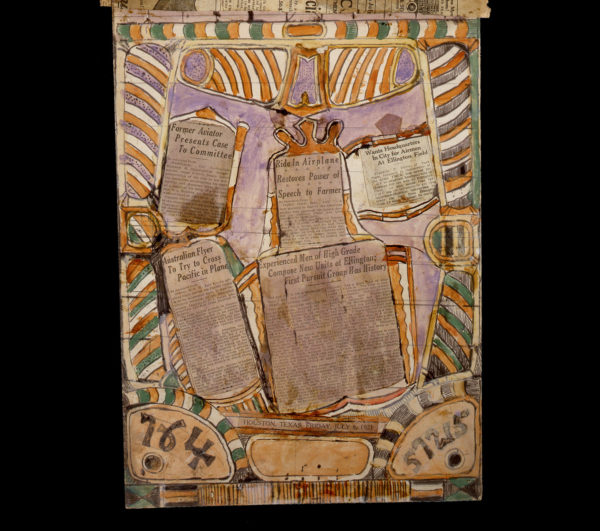Born in Prussia, Charles Dellschau immigrated to Texas in the 1850s. He also lived in California, where he may have been the draftsman for a secret society for airplane inventors, the Sonora Aero Club, fifty years before the Wright brothers’ first flight. During the Civil War, he married a young widow, with whom he had two children. Although there is scant documentation on his activities before this time, we know that he was a butcher in Fort Bend County, near Houston. His wife died in 1877, followed by his son. For a time, he worked as a saddle maker. When he retired, he quietly began to create twelve books of collages (composed mainly of articles and press photographs about aviation), writings, and pen drawings of aircraft enhanced with gouache or watercolor—inventions, he said, of the members of the Sonora Aero Club. Dellschau clipped pictures out of newspapers to use them for purposes quite different from the original intentions. They seemed to become a direct trace of his personal mental reality as he integrated them with the heterogeneous fragments of world history in his works. Like a film editor, he linked the images to each other on one or several pages, bringing out analogies, tensions, and sometimes contrasts or contradictions. Each book is bound with a system of tabs composed of press clippings, on which the pages are mounted. It was thus through newspapers that Dellschau connected the wide variety of events that were the subject of his drawings and collages—as if the thread of his life was inextricably tied to the current events that they depicted. Starting in 1914, Dellschau’s compositions, which had been flamboyantly colored and are reminiscent of circus posters (inspired by almanacs and Kalender Bilder of the time) became more somber and serious, featuring the catastrophes of his time. Dellschau’s books resurfaced in a flea market in the 1960s. Three of them had been taken apart, but the other nine, which are conserved in Texas museums and by Collection abcd in France, are intact. The binding of the last book inevitably refers to the idea of the secret: the artist sewed the front and back covers together with thread not only at the spine but also along the fore edge, preventing it from being opened. It is thus a radically strange object, a sort of enigmatic last will or reliquary.

